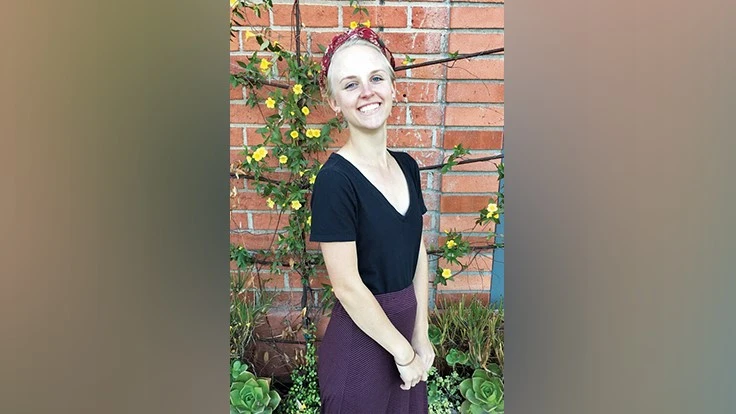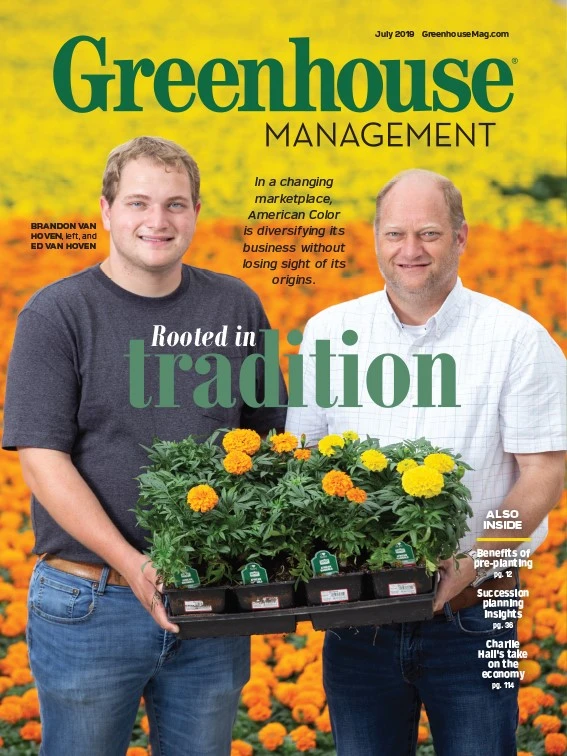

“I was (a) very shy, quiet type of person (in high school),” she says. “But I actually took over the nursery and this lot.”
With approval to revive the lot at her school, Drohan drew up the plans and got to work. “I designed a whole drought-tolerant garden,” she says. “Before, it was literally just a plot of dirt and weeds, and then I saw that transform into a space where students or people can actively see what drought-tolerant plants do.”
She was even able to start selling the plants she was growing in the garden at school. Around the time of her senior year, she estimates she was handling upwards of 500 plants. The garden still exists after Drohan has graduated, and she says there are students still maintaining it today.
“That really showed me that this is something I really want to do,” she says.
Once she saw what she was capable of, Drohan realized her interest in the artistic side of horticulture as well.
“I kind of took that (lot) as my own, and for the past four years, I started to develop a huge passion and just kind of a realization of my own talents with plants,” she says. “I’ve always also been a very artistic person. So I find that landscaping combines both the technical skills of the horticulture industry with the actual creative side so I can get my designs out and really express what things looked good to me.”
With her sights set on larger schools like Cal Poly and U.C. Davis, she’s working toward her associate degree in landscape architecture and plugging away at her general courses. Now that she has two years of college experience under her belt, she’s also started her own business on the side. She applied for a business license in her county and is registered under Sage Succulents and Cacti.
“Eventually, I would like to have my own little shop and then probably a greenhouse of my own. Not super large, but I would like to have one,” she says.
With her business license, she’s even been able to start some landscape architecture work for a family friend. It’s her first large project, but she’s been able to handle all the back-end work and some labor on her own.
“I already designed it; I’m doing all of the orders; I’m overseeing delivery, so I’m basically doing it all,” she says. “They wanted to do a lot of the labor themselves but I’m doing all the design portions, the landscaping, all of that.”
Drohan’s focus is still on sustainability, and she hopes employers start to realize that the incoming workforce is more focused on those efforts than past generations.
“(My generation is) a lot more passionate about the environment than people in the past,” she says. “There’s a larger amount of young people who are really passionate about helping others and also making the world more sustainable. I think going forward, employers would be able to use that to their advantage because a lot of companies have to start making their own businesses more sustainable.”

Explore the July 2019 Issue
Check out more from this issue and find your next story to read.
Latest from Greenhouse Management
- Anthura acquires Bromelia assets from Corn. Bak in Netherlands
- Top 10 stories for National Poinsettia Day
- Langendoen Mechanical hosts open house to showcase new greenhouse build
- Conor Foy joins EHR's national sales team
- Pantone announces its 2026 Color of the Year
- Syngenta granted federal registration for Trefinti nematicide/fungicide in ornamental market
- A legacy of influence
- HILA 2025 video highlights: John Gaydos of Proven Winners





